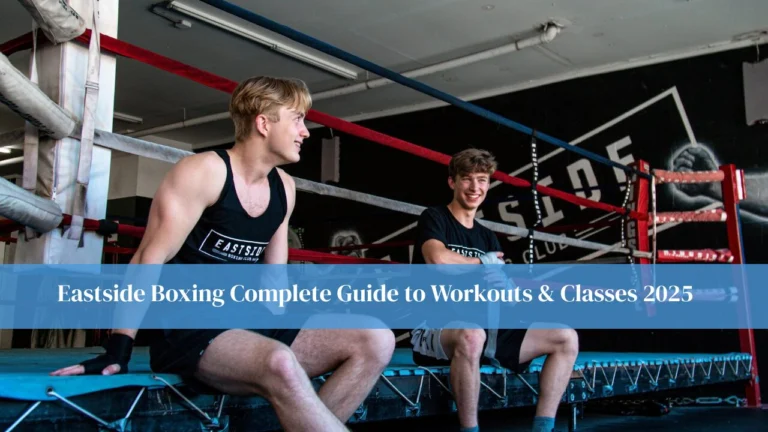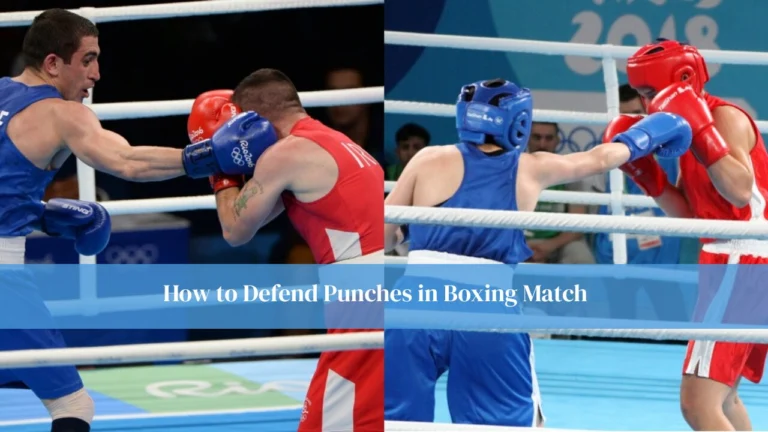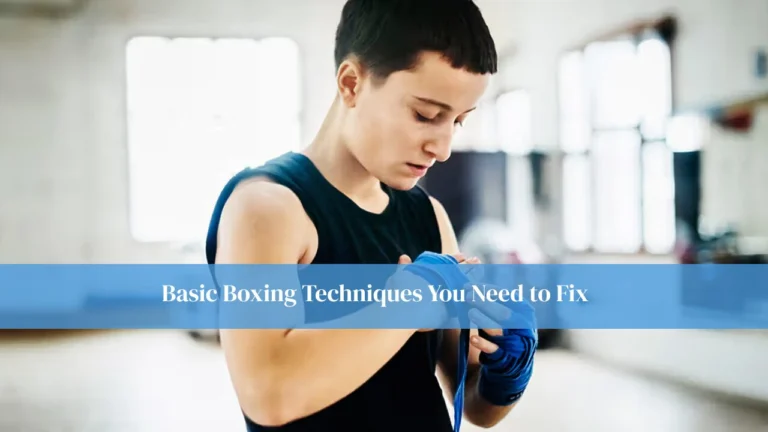Boxing is one of the most demanding sports when it comes to physical exertion. Beyond the flashy punches and footwork, boxing requires full-body coordination, speed, endurance, and power. A common question among beginners and fitness fans is: What muscles are used in boxing? In this detailed guide, we’ll break down every major muscle group activated during boxing, explain how each contributes to performance, and provide tips to build these muscles effectively. We’ll also explore myths, frequently asked questions, and training advice based on real-world experience.
The Muscle Groups Used in Boxing
Boxing is not just an upper-body sport. From head to toe, nearly every muscle in the body plays a role. Here’s a breakdown of the primary muscle groups and how they’re used:
Upper Body Muscles
Shoulders (Deltoids)
Function: Deliver powerful punches, control arm movement, and maintain guard position. Key Role in Boxing: The deltoids are crucial for punch speed and endurance. They enable you to throw jabs, hooks, and uppercuts rapidly without tiring too quickly.
Chest (Pectorals)
Function: Assist with the pushing motion during punches. Key Role in Boxing: The pectorals contribute to the force behind punches like the straight right and jab.
Arms and Back
Arms (Biceps and Triceps)
Biceps: Help retract the arm after a punch. Triceps: Generate power during the extension phase of a punch. Key Role in Boxing: Triceps are especially important for snap and reach, particularly in the jab.
Back (Latissimus Dorsi, Trapezius, Rhomboids)
Function: Aid in pulling motions, stabilizing the body, and generating rotational power. Key Role in Boxing: Lats and traps help with defense (slipping and rolling) and provide power for hooks and uppercuts.
Core Muscles
Abdominals and Obliques
Function: Facilitate rotation, balance, and stability. Key Role in Boxing: Core muscles allow you to twist your torso for power punches and protect vital organs by tensing during impact.
Lower Back (Erector Spinae)
Function: Maintain posture and help transfer power from the lower body to upper body. Key Role in Boxing: Prevent injury and support the spine during dynamic movement.
Lower Body Muscles
Legs (Quadriceps, Hamstrings, Glutes, Calves)
Function: Drive movement, generate power, and provide stability. Key Role in Boxing: Power starts from the ground. Legs are crucial for footwork, dodging, and delivering knockout punches through kinetic chain movement.
How These Muscles Work Together in a Punch
A punch isn’t just a swing of the arm it’s a kinetic chain reaction: Ground Force: The foot pushes against the ground. Leg Drive: Power travels through the calves, quads, and hamstrings. Hip Rotation: The hips and glutes rotate to add torque. Core Transfer: The core channels power upward. Shoulder and Arm Extension: The shoulders and triceps release the punch.
This full-body involvement explains why elite boxers have well-balanced physiques and immense power.
Does Boxing Build Muscle?
Yes but with conditions. Boxing primarily builds lean, functional muscle rather than bulky mass. It focuses on: Muscle endurance over hypertrophy, explosive strength for fast-twitch muscle development, core stability and rotational power.
If your goal is to build visible muscle mass, pairing boxing with resistance training and proper nutrition is key. According to the National Strength and Conditioning Association, combining sport-specific training with hypertrophy routines produces the best results.
Training Tips to Strengthen Boxing Muscles
Boxers tend to have athletic, sculpted physiques because their training involves repeated bouts of high-intensity effort. Bag work, sparring, shadowboxing, and mitt drills work muscles at various angles and intensities. Over time, this leads to increased muscle tone and fat loss, though not necessarily bulky muscle mass.
To develop the muscles used in boxing, include these exercises in your routine: Push-ups, pull-ups, shadowboxing with weights, resistance band punches, Russian twists, planks, medicine ball slams, hanging leg raises, squats, lunges, calf raises, plyometric jumps, deadlifts, jump rope, sled pushes or tire flips, and sprint intervals.
Real-World Insight: Boxer’s Perspective
Professional fighters like Canelo Alvarez, Tyson Fury, and Katie Taylor train in specific phases throughout their camps. These phases include: Endurance and conditioning phase to build base aerobic and muscular endurance, strength and hypertrophy phase to build functional strength, power and explosiveness phase for plyometrics, Olympic lifts, and speed drills, and technical and sparring phase to sharpen skill while maintaining peak physical condition.
Strength coaches often emphasize the importance of leg and core development, knowing that these regions are the foundation of punching power. Former Olympian Andre Ward once said he trained his legs “more than upper body” because “a punch starts from the ground.” This insight shows how practical and scientific knowledge intersect in elite training programs.
Common Myths About Boxing and Muscles
Myth #1: Boxing Only Works Your Arms
Reality: Legs and core do most of the work. Arms simply deliver the energy generated by the lower body.
Myth #2: Boxing Makes You Bulky
Reality: Boxing builds lean muscle unless paired with a calorie surplus and resistance training. You will get stronger and more toned but not necessarily gain size.
Myth #3: You Don’t Need Strength Training if You Box
Reality: Adding resistance exercises improves punch power, prevents injury, and enhances endurance. Boxing training alone is great for stamina and coordination but lacks the overload required for significant strength gains.
Myth #4: Heavyweights Are Just Big and Slow
Reality: Even heavyweight boxers need agility, footwork, and cardiovascular endurance. Their size is supported by functional strength, not just bulk.
Benefits of Muscle Engagement in Boxing
Boxing isn’t just about hitting it’s about moving efficiently, absorbing impact, and executing strategy. Strong muscles help in: Punch power and speed, improved defense (blocking, parrying, slipping), balance and coordination, longer stamina during fights or workouts, injury prevention through proper support of joints and ligaments.
Muscular endurance is especially crucial, allowing fighters to maintain output throughout multiple rounds.
Nutrition Tips for Building Muscle While Boxing
Training is only half the battle nutrition supports muscle development and recovery. Boxers aiming to build muscle should: Eat a protein-rich diet (chicken, fish, eggs, legumes, lean beef), incorporate complex carbs (brown rice, oats, quinoa) for energy, consume healthy fats (avocados, olive oil, nuts) for hormone balance, stay hydrated to maintain performance, and consider supplementation like whey protein, BCAAs, or creatine under guidance.
Eating around your training schedule ensures optimal muscle recovery and growth. Pre-workout carbs fuel your sessions, and post-workout protein supports repair.
FAQs
What are the most important muscles for punching power?
Legs and core muscles generate most of the power, with shoulders and triceps delivering it. A strong base allows for torque and speed.
Can boxing replace traditional weightlifting?
Not entirely. Boxing improves endurance and functional strength but lacks the progressive overload needed for muscle hypertrophy.
How often should I train boxing muscles?
2–4 times per week, depending on intensity. Include resistance and recovery days to allow muscle repair.
Does boxing work your abs?
Yes especially obliques and lower abs. Each punch and defensive move engages the core, making it one of the most activated areas.
What’s the best way to prevent muscle fatigue in boxing?
Focus on high-rep endurance training, proper nutrition, hydration, and rest. Prioritize post-workout recovery and avoid overtraining.
Can women build muscle through boxing?
Absolutely. Women who box regularly build lean muscle, reduce fat, and improve overall strength and tone. The training principles apply to both genders.
Conclusion
Boxing is a full-body workout that develops multiple muscle groups simultaneously. From the shoulders and arms to the core and legs, boxing trains your body to be explosive, agile, and resilient. To optimize your performance, understand how these muscles work together and follow a training routine that strengthens the entire kinetic chain.
Whether you’re training to fight or just to get in shape, knowing which boxing muscles are used will help you target your workouts more effectively and unleash your full athletic potential. Prioritize technique, recovery, and smart training to maximize the muscular and cardiovascular benefits boxing offers. Visit boxing essential to explore more.




